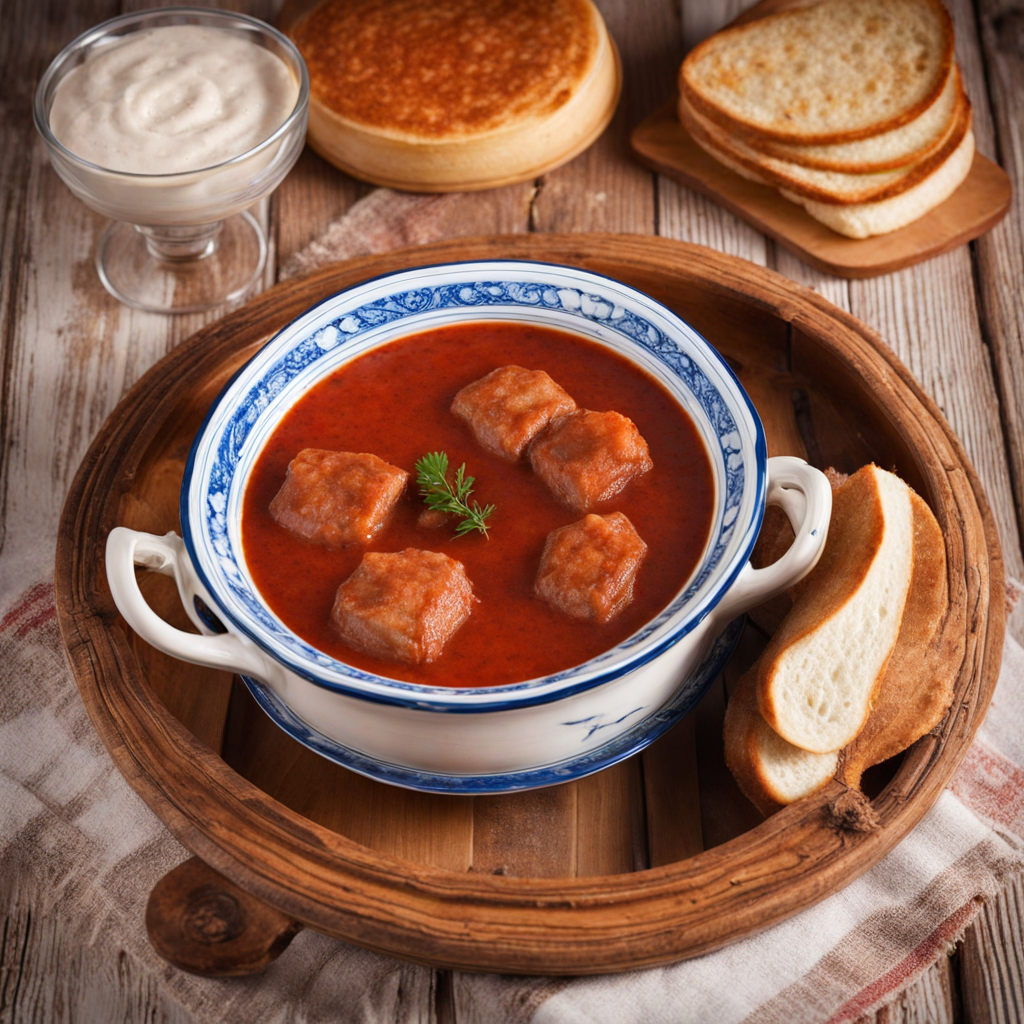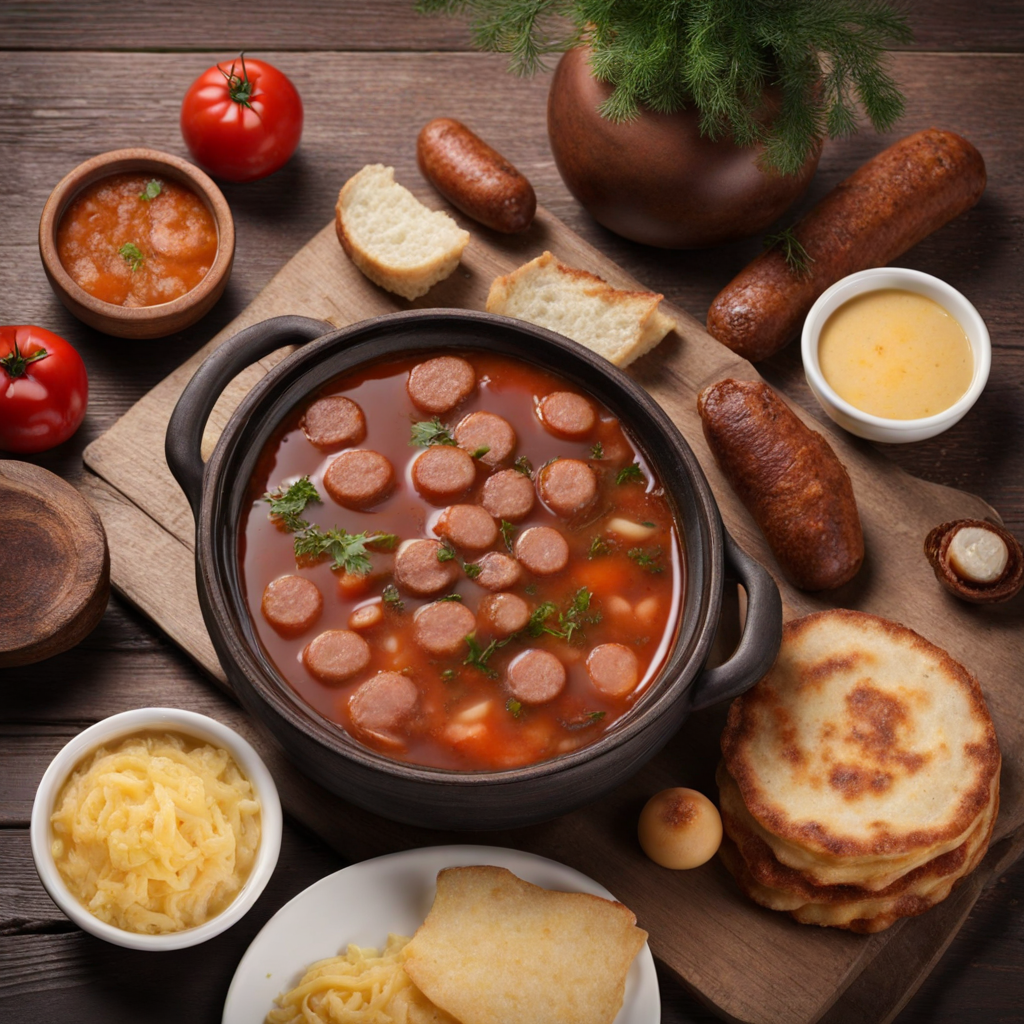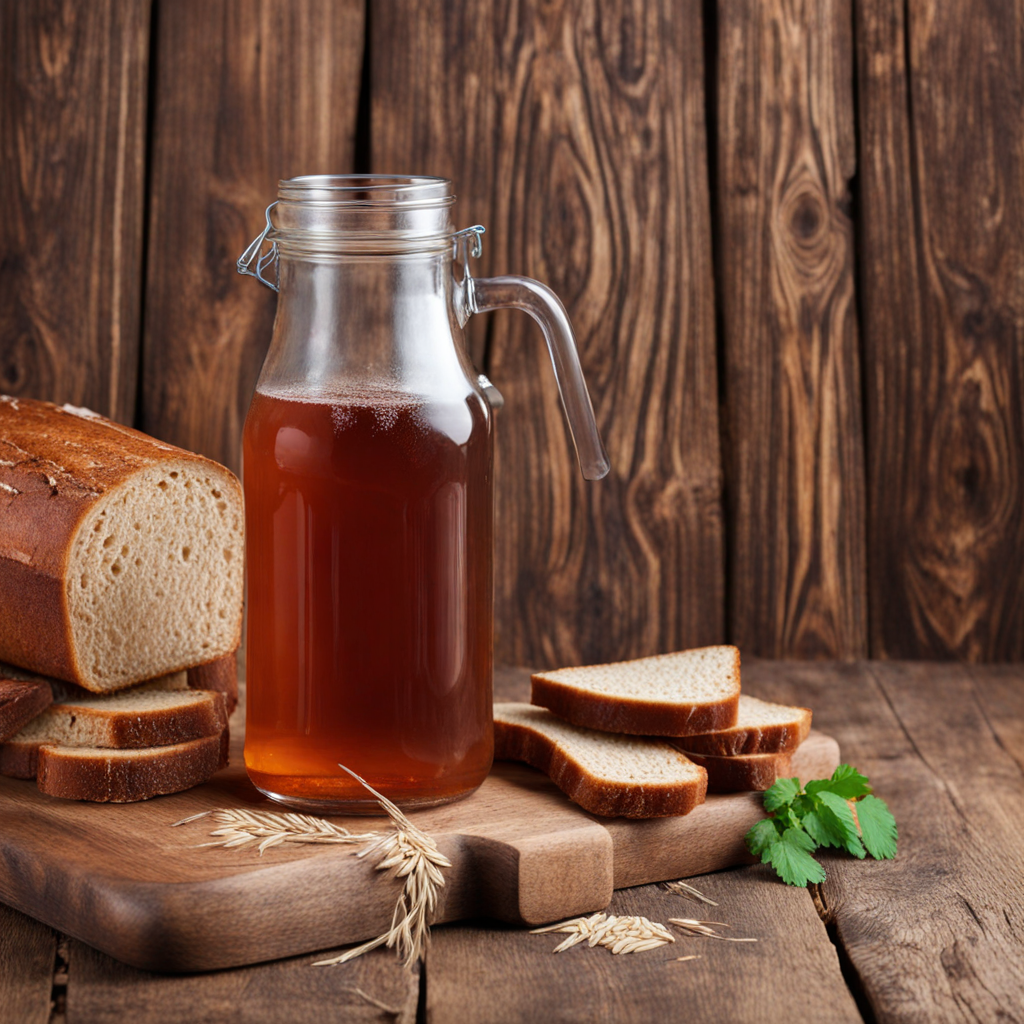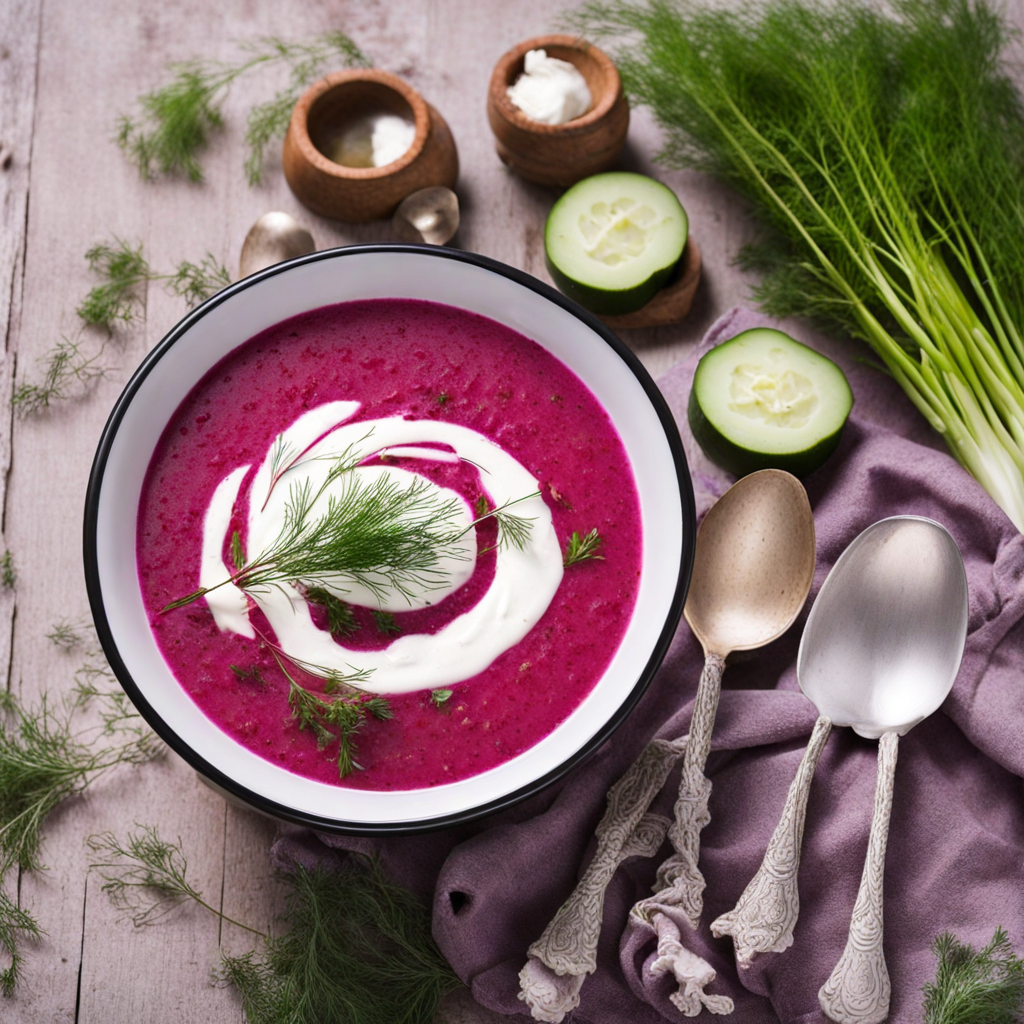Machanka
Machanka is a hearty and flavorful dish originating from Belarus, often celebrated for its rustic charm and homey appeal. At its core, Machanka consists of a rich, thick meat sauce typically made with pork, beef, or a combination of both, slow-cooked to achieve tender results. The meat is seasoned with a variety of spices, including black pepper, garlic, and bay leaves, which infuse the sauce with a deep and savory flavor. This dish is often served alongside thick, fluffy pancakes known as "draniki," which are made from grated potatoes and provide the perfect vehicle for soaking up the delicious sauce. The unique texture of Machanka is one of its defining features. The sauce is both creamy and hearty, often thickened with flour or sour cream, lending a satisfying richness that complements the tender chunks of meat. The balance of flavors is further enhanced by the use of onions and sometimes mushrooms, adding layers of sweetness and umami. The dish is typically served in a communal pot, inviting diners to share and savor the experience together, which reflects the Belarusian emphasis on hospitality and family gatherings. Machanka is more than just a meal; it is a cultural experience that embodies the warmth and tradition of Belarusian cuisine. Often enjoyed during festive occasions or family dinners, it evokes a sense of nostalgia and comfort. The pairing of Machanka with draniki not only adds a delightful textural contrast but also highlights the versatility of potatoes in Belarusian cooking. For those seeking to explore new tastes, Machanka offers a delightful combination of flavors and textures that is both satisfying and memorable.
How It Became This Dish
The History of Мачанка: A Taste of Belarusian Tradition #### Origins of Мачанка Мачанка, a beloved traditional dish from Belarus, has its roots deeply embedded in the country’s agrarian lifestyle. The name itself derives from the Belarusian word "мачання," which translates to "to dip" or "to soak." This culinary staple is a rich, hearty sauce, typically made from a mix of pork, beef, or game meat, that is served with various accompaniments, most notably potatoes or bread. The origins of Мачанка can be traced back to the rural communities of Belarus, where the harsh climate and the need for sustaining meals dictated the use of available resources. It is believed that the dish emerged in the 12th century, during the time of the Grand Duchy of Lithuania, which encompassed modern-day Belarus. The use of locally sourced meats, combined with simple, hearty ingredients, reflects the agricultural practices of the time. Farmers would often prepare Мачанка as a filling meal to provide energy for labor-intensive days in the fields. #### Cultural Significance Мачанка is more than just a dish; it is a cultural symbol that represents the Belarusian way of life. Traditionally, it has been prepared during family gatherings, festive occasions, and communal celebrations, emphasizing the values of togetherness and hospitality. The preparation of Мачанка often involves the entire family, with younger generations learning from their elders, thus fostering a sense of continuity and cultural identity. In Belarusian folklore, food plays a vital role in rituals and customs. Мачанка often features in celebrations such as weddings, harvest festivals, and other communal gatherings. It is typically served alongside other traditional dishes, showcasing the diversity of Belarusian cuisine. The act of dipping bread or potatoes into the sauce not only enhances the dining experience but also symbolizes sharing and unity among family and friends. #### Ingredients and Preparation The traditional recipe for Мачанка varies by region and family, reflecting the local ingredients and culinary preferences. The base of the dish usually consists of pork, often using tougher cuts that benefit from slow cooking. The meat is typically stewed in a rich sauce made from onions, garlic, and a variety of spices. A key component is the use of sour cream, which adds a creamy texture and tangy flavor, bringing depth to the dish. To prepare Мачанка, the meat is first browned to develop flavor, then simmered slowly with onions and garlic until tender. The sauce is thickened with flour or breadcrumbs, giving it a hearty consistency. Some variations include the addition of mushrooms, carrots, or even pickles, which offer a unique twist on the classic recipe. Once ready, Мачанка is served hot, often accompanied by boiled potatoes, dumplings, or crusty bread, inviting diners to indulge in the delightful act of dipping. #### Evolution Over Time As Belarusian society evolved, so too did the dish of Мачанка. During the Soviet era, the dish was popularized in restaurants and canteens, becoming a staple of the national cuisine. The state’s emphasis on collectivism and shared meals further solidified Мачанка’s place in Belarusian culture. However, while it gained popularity, the recipe began to standardize, with many traditional elements fading away in favor of convenience and speed. In the post-Soviet era, there has been a revival of interest in traditional Belarusian cuisine. Chefs and home cooks alike have sought to reclaim and preserve heritage dishes like Мачанка, often experimenting with modern twists while maintaining the essence of the original recipe. This resurgence reflects a broader movement across Eastern Europe to celebrate local food cultures, emphasizing the importance of culinary heritage in national identity. Today, Мачанка is not only enjoyed within Belarus but has also gained recognition in neighboring countries, where it is often featured in Belarusian-themed restaurants and festivals. International food enthusiasts have come to appreciate the dish for its robust flavors and comforting qualities, leading to its inclusion in various culinary events that seek to highlight traditional Eastern European cuisine. #### Modern Interpretations In contemporary Belarus, Мачанка has seen a revival in both home kitchens and restaurants, often paired with local beers or traditional kvass. Chefs are experimenting with various meats, such as duck or venison, and incorporating seasonal vegetables to modernize the dish while paying homage to its roots. Vegetarian and vegan adaptations have also emerged, replacing meat with mushrooms and legumes, allowing a wider audience to experience the flavors of this traditional dish. Moreover, food festivals and cultural events across Belarus now often feature Мачанка as a centerpiece, showcasing its significance to the national identity. These gatherings celebrate the culinary diversity of Belarus, bringing together locals and tourists alike to savor the comforting flavors of this cherished dish. #### Conclusion Мачанка is more than just a meal; it is a reflection of Belarusian culture, history, and communal values. From its humble origins in rural kitchens to its modern interpretations in restaurants, the dish has adapted over time while remaining a beloved symbol of Belarusian heritage. As food historians and culinary enthusiasts continue to explore and celebrate traditional dishes, Мачанка stands out as a testament to the resilience and richness of Belarusian cuisine. Whether enjoyed in a family home or at a festive gathering, Мачанка invites all to partake in a shared experience of warmth, flavor, and tradition.
You may like
Discover local flavors from Belarus







